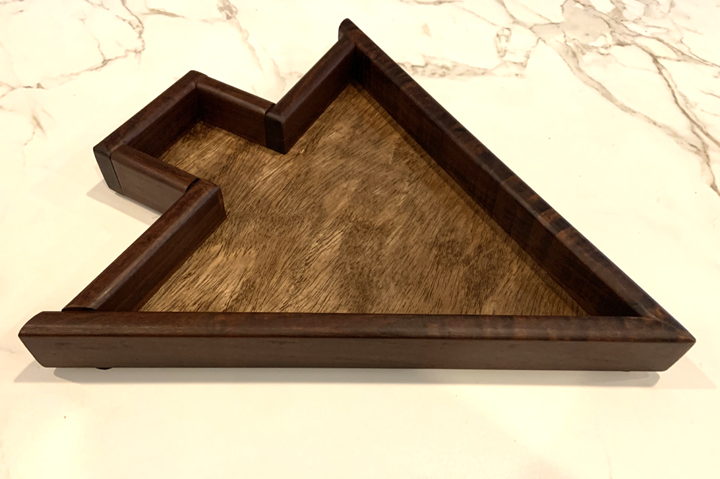

Ipe Serving Tray 1268


Measures 6" wide by 17" wide by 19" tall - $40
Ipe (Brazilian Walnut) – Ipe is a wood of extremes: extremely dense and durable, as well as extremely difficult to work. Its incredible hardness and strength make it well suited for flooring applications, though it is referred to as “Brazilian Walnut” among flooring dealers—though it is not related to true Walnut in the Juglans genus. It is three times harder than oak, and a board will sink in water. The heartwood of Ipe has a color that ranges from reddish brown to blackish brown to yellowish olive brown. It is normal to see the wood having black and brown stripes. The Ipe wood has fine to medium texture. It features straight to their regular pattern of the grain. It is commonly used for flooring, decking, exterior lumber, veneer, tool handles, and other turned objects. It is very durable and has excellent insect resistance.
Workability - Overall, Ipe is a difficult wood to work, being extremely hard and dense, with high cutting resistance during sawing. Ipe also has a pronounced blunting effect on cutting edges. The wood generally planes smoothly, but the grain can tearout on interlocked areas. Also, Ipe can be difficult to glue properly, and surface preparation prior to gluing is recommended (SEE INDEX).
Finish - Besides being hard, ipe is an oily wood, and any type of finish that forms a film, such as varnish or polyurethane, will begin to peel and flake soon after you apply it. A better option is to use a penetrating oil finish. The oil won't penetrate the close-grained wood very deeply, however, and the residue that remains on the surface will quickly become tacky unless you wipe it off. Consequently, the best way to finish ipe is to brush on a light coat of oil with a paintbrush and wipe off the excess almost immediately. The best covering is a thin coat of ultraviolet-blocking oil- or water-based penetrating finish.